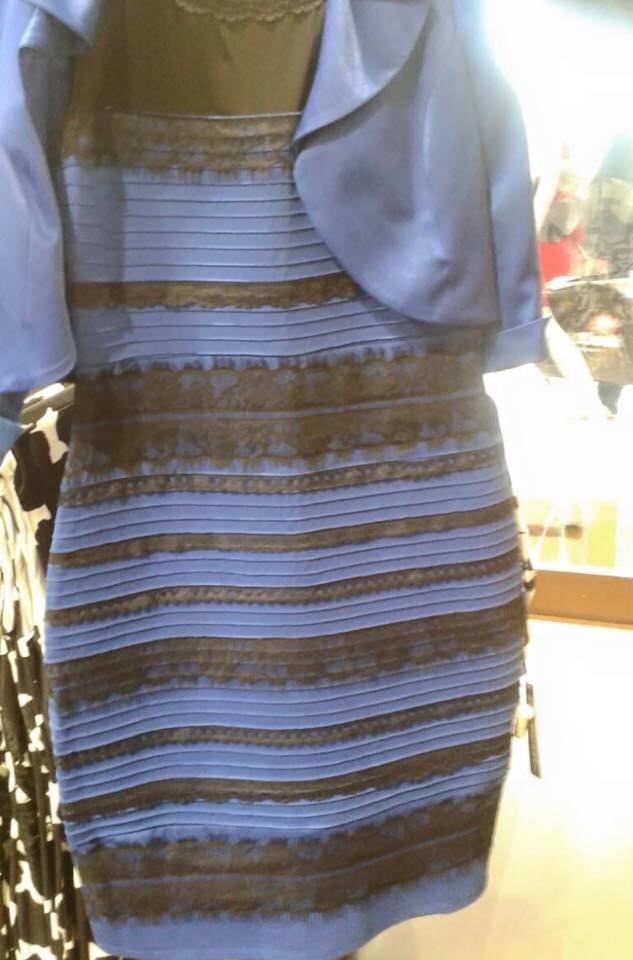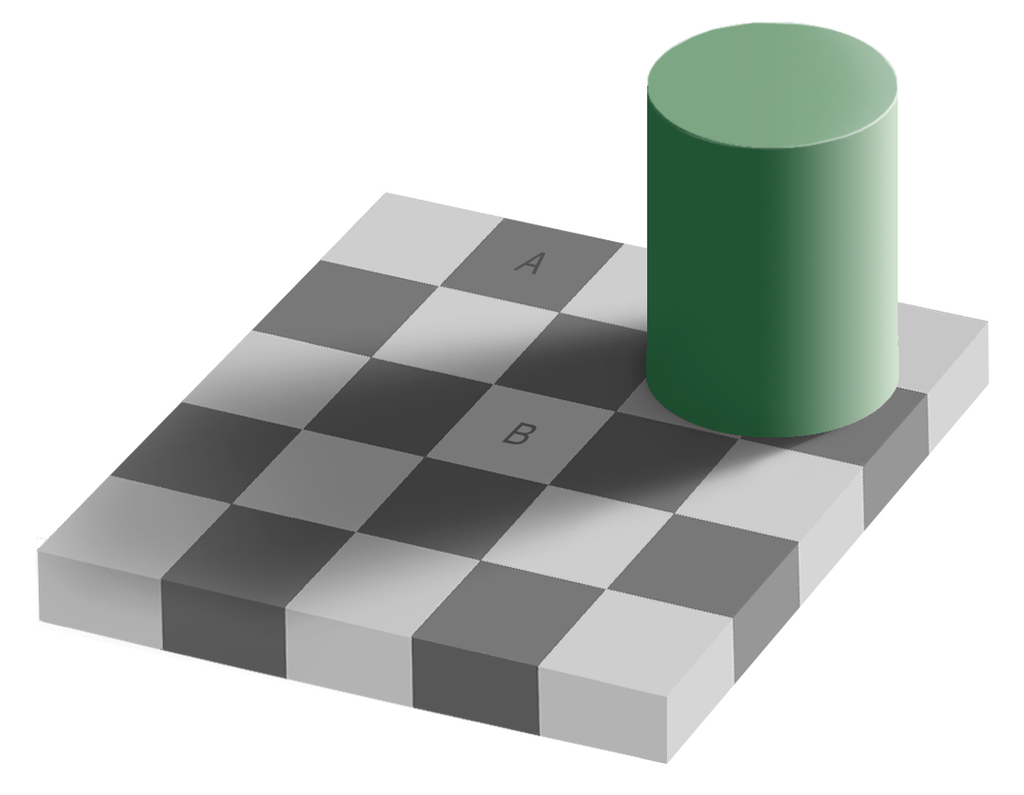Dress that shared the Internet
For the second day, a lot of people at various sites are discussing a very simple question. What color is this dress?

It would seem, what difficulties may arise here? But there is no unity in this: three-quarters of the respondents consider the dress to be white and gold, and one quarter to blue and black. Agree, it is strange. What is the matter?
Let's immediately agree that it's not about the monitor. Of course, someone can monitor the monitor so that a person can not distinguish an orange from a tomato. But there is ample evidence that different people (for example, husband and wife) see different colors in this dress, while looking at the same monitor at the same time.
')
To understand what was going on, the Buzzfeed portal turned to experts in the field of psychology and neurobiology.
The human brain determines the color of an object based on the amount of light that falls on the retina of the eye. This overall brightness is made up of light that radiates an object itself and light that reflects its surface.
In the case of this dress, some people's brains suggest that they are dealing with a less reflective surface and a blue-black color is formed in their minds. Other people will see the white-gold dress, because their brain believes that the surface of the object, although in the shade, reflects well.
All this is very similar to the famous optical illusion of Adelson. Chess cells, marked in the figure by the letters A and B, are painted in the same shade of gray, but due to the context (environment), they seem completely different.

Let us suppose. But why does the brain of different people interpret the same image in different ways? And moreover, the same person can see in the dress one color first, and after a while another one!
Yes, this is an interesting question. And if you believe John Borga, a neuroscientist at Rockefeller University, the science in it takes about the same position as it was in a famous film, determining whether there is life on Mars. In other words, science is not up to date. “Scientists spend a lot of time studying the work of the eye as a whole, but the individual characteristics of people are not of such interest. In most cases, people's eyes work the same way, because we live in the same environment, with the same shade of blue in the spectrum of light. ”
Nevertheless, some assumptions can be constructed. According to the same neurobiologist, a person recognizes images from large to small, first the main picture is built in the brain, which is then broken up into smaller, detailed pieces. This process is strongly influenced by the previous experience of the person, as well as what exactly he expects to see.
Each person has his own base of experience and expectations. For example, when looking at the notorious dress on his image can affect what you looked to him. In addition, you can recall other previously seen dresses with a similar texture or cut, and this will also make your adjustments to your impression. This phenomenon in psychology is called priming (the effect of precedence).
And what color do you see?

It would seem, what difficulties may arise here? But there is no unity in this: three-quarters of the respondents consider the dress to be white and gold, and one quarter to blue and black. Agree, it is strange. What is the matter?
Let's immediately agree that it's not about the monitor. Of course, someone can monitor the monitor so that a person can not distinguish an orange from a tomato. But there is ample evidence that different people (for example, husband and wife) see different colors in this dress, while looking at the same monitor at the same time.
')
To understand what was going on, the Buzzfeed portal turned to experts in the field of psychology and neurobiology.
The human brain determines the color of an object based on the amount of light that falls on the retina of the eye. This overall brightness is made up of light that radiates an object itself and light that reflects its surface.
In the case of this dress, some people's brains suggest that they are dealing with a less reflective surface and a blue-black color is formed in their minds. Other people will see the white-gold dress, because their brain believes that the surface of the object, although in the shade, reflects well.
All this is very similar to the famous optical illusion of Adelson. Chess cells, marked in the figure by the letters A and B, are painted in the same shade of gray, but due to the context (environment), they seem completely different.
Let us suppose. But why does the brain of different people interpret the same image in different ways? And moreover, the same person can see in the dress one color first, and after a while another one!
Yes, this is an interesting question. And if you believe John Borga, a neuroscientist at Rockefeller University, the science in it takes about the same position as it was in a famous film, determining whether there is life on Mars. In other words, science is not up to date. “Scientists spend a lot of time studying the work of the eye as a whole, but the individual characteristics of people are not of such interest. In most cases, people's eyes work the same way, because we live in the same environment, with the same shade of blue in the spectrum of light. ”
Nevertheless, some assumptions can be constructed. According to the same neurobiologist, a person recognizes images from large to small, first the main picture is built in the brain, which is then broken up into smaller, detailed pieces. This process is strongly influenced by the previous experience of the person, as well as what exactly he expects to see.
Each person has his own base of experience and expectations. For example, when looking at the notorious dress on his image can affect what you looked to him. In addition, you can recall other previously seen dresses with a similar texture or cut, and this will also make your adjustments to your impression. This phenomenon in psychology is called priming (the effect of precedence).
And what color do you see?
Source: https://habr.com/ru/post/374691/
All Articles